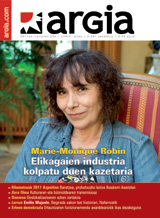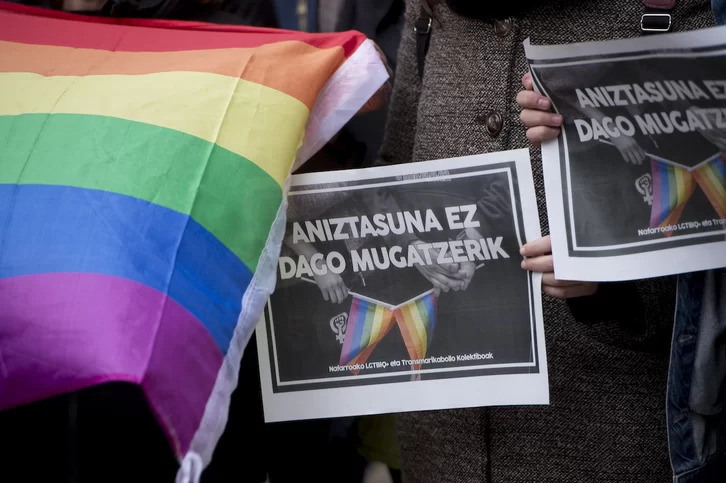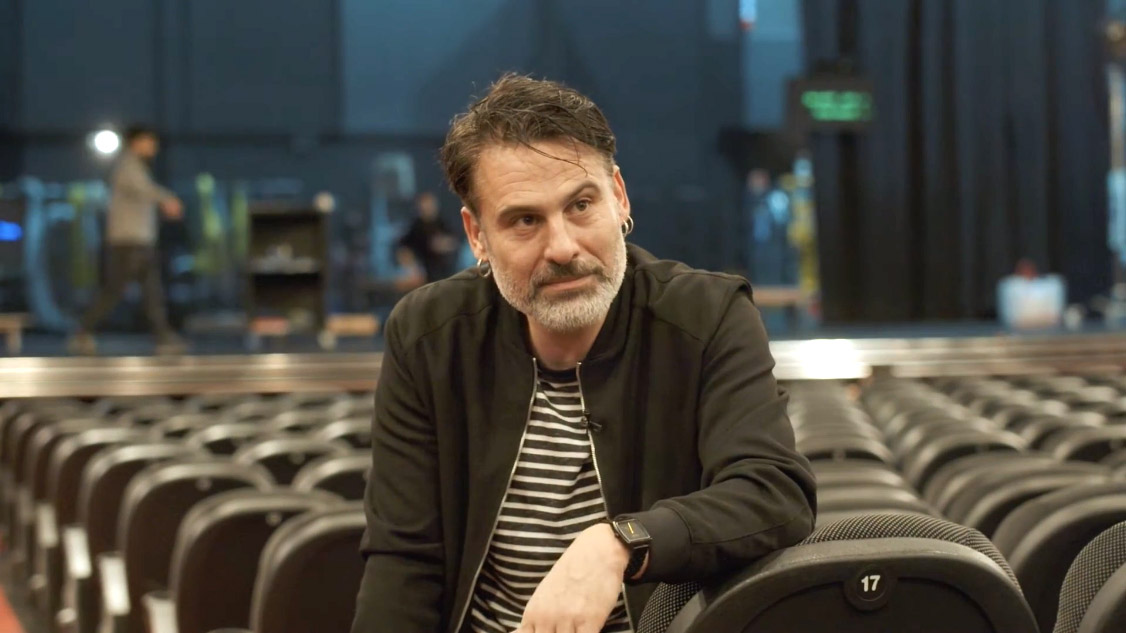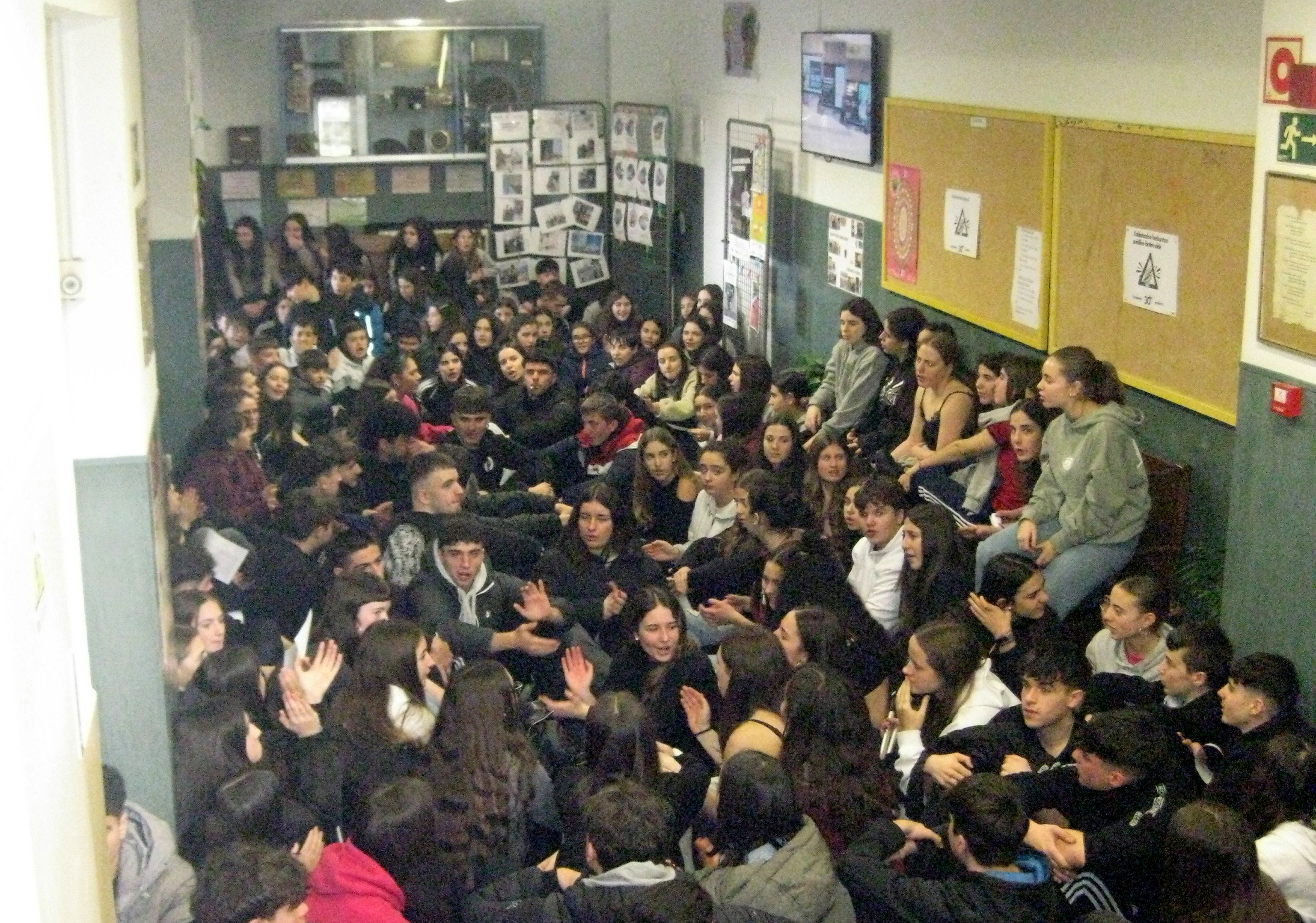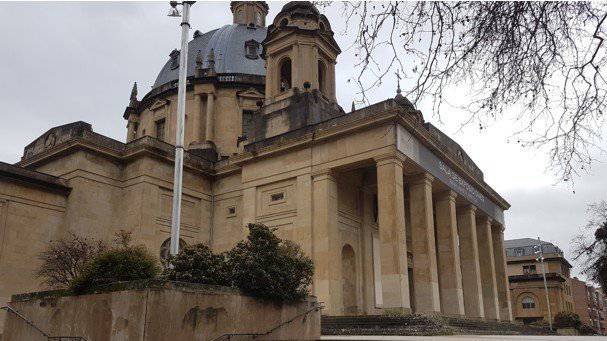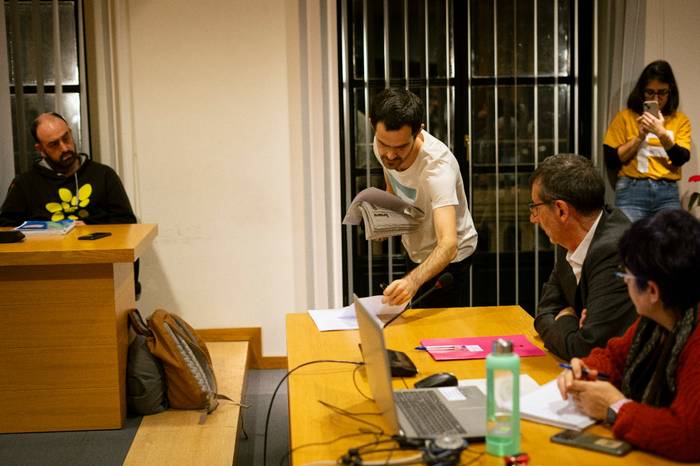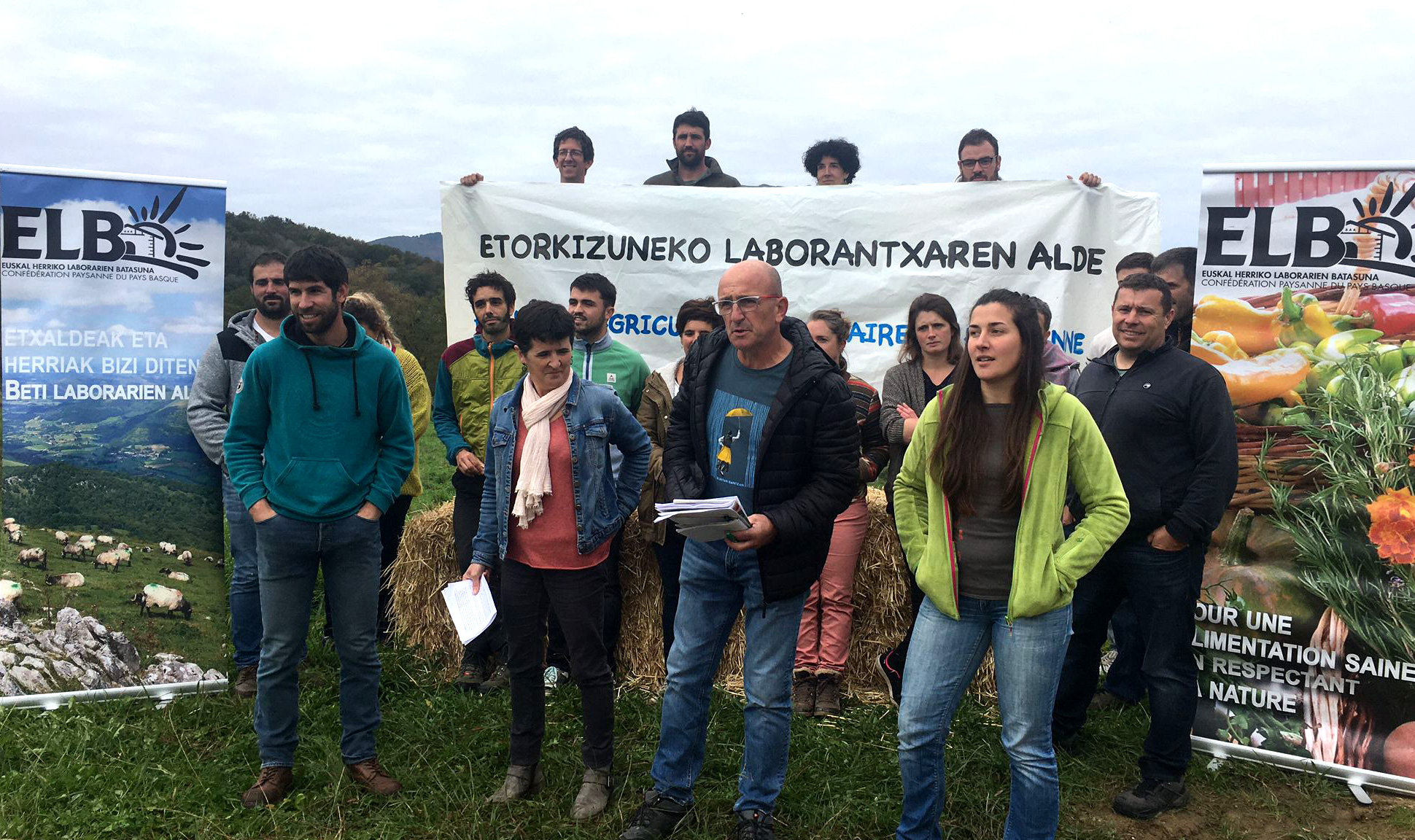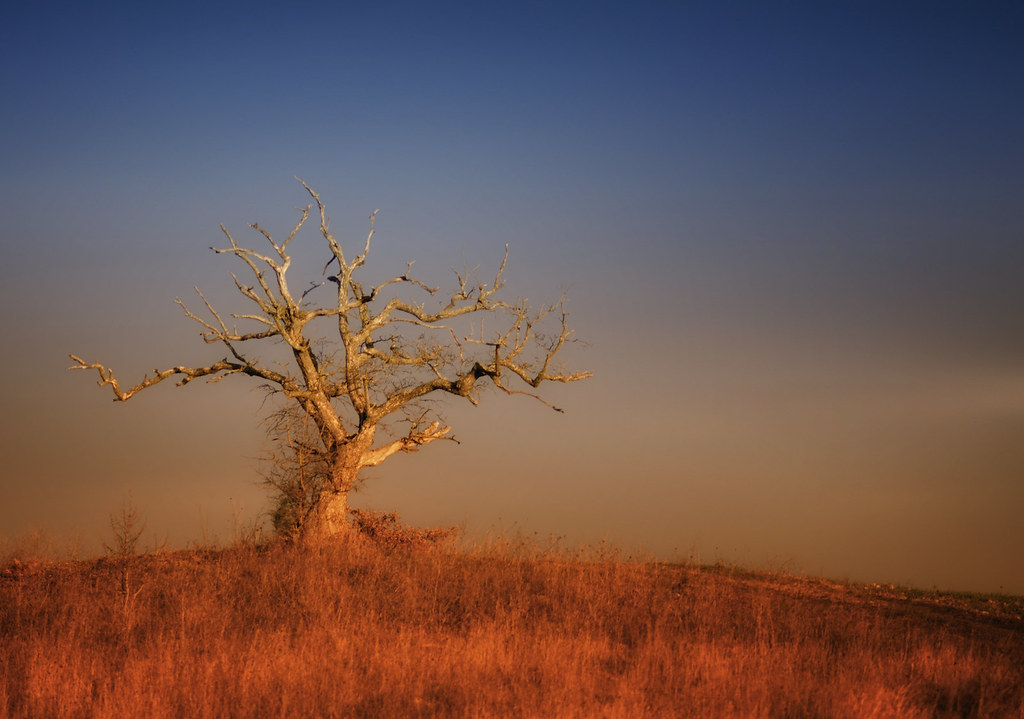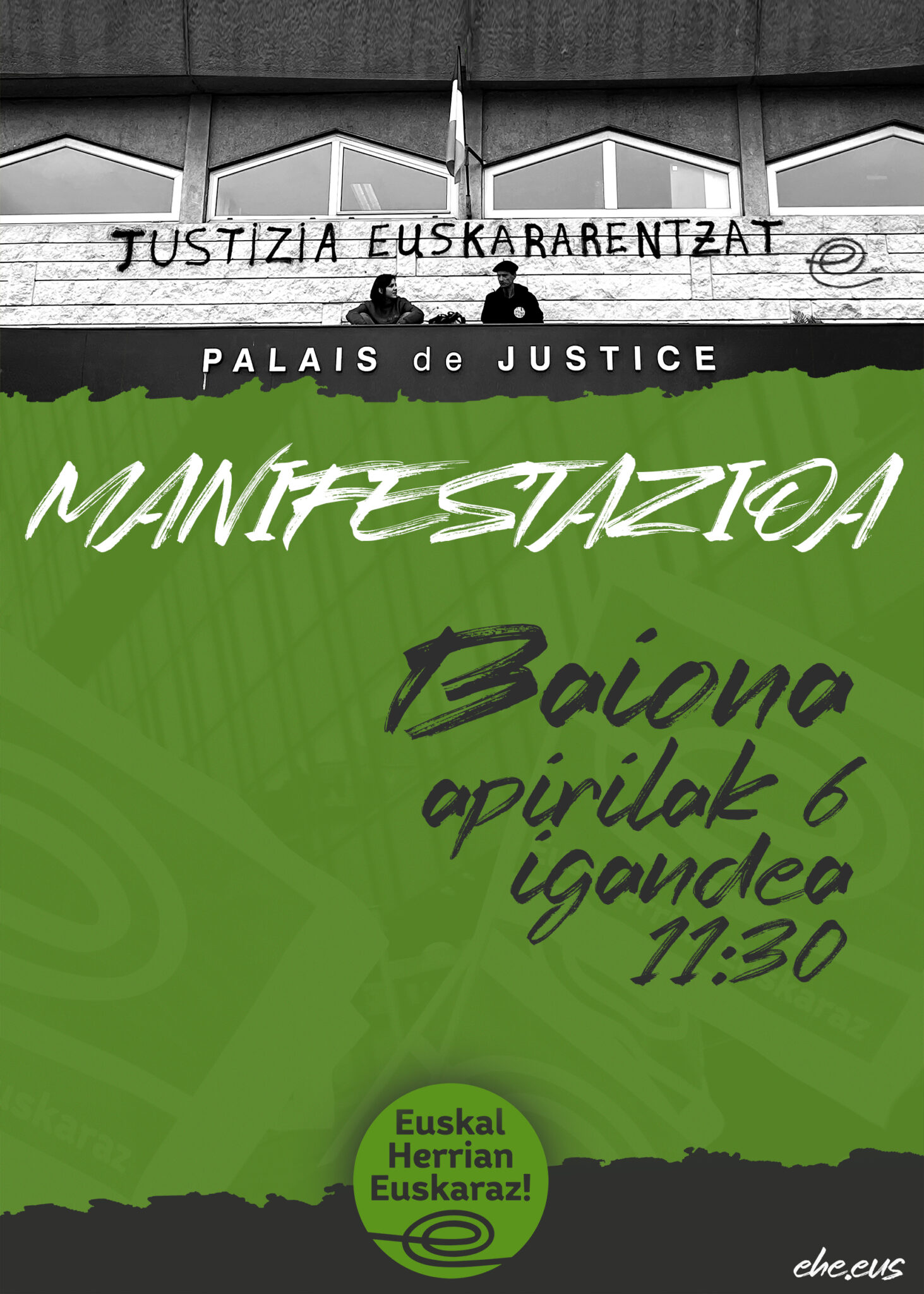The garden as a classroom
- The garden of Ikasberri Ikastola of Azpeitia, in charge of organizing this year’s Kilometroak, has been full of boys and girls. The day we approach, the plants and vegetables they've had in the seedbed of the class are being planted. The goal is for students to approach nature and learn to respect it.
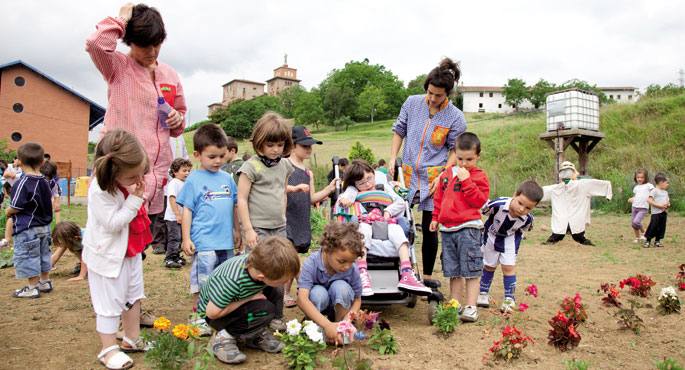
Leire has offered us the palm of the hand loaded with raspberries and screamed “First wash!” as we approached the mouth. He has learned the lesson. She is 4 years old and enjoys walking in the garden, like most boys and girls at ikastola. Gorka Vesga is in charge of the garden. It is clear that the garden positively influences the learning processes of children: “By participating in the garden, they become aware of taking care of the environment.” In addition to the students of Early Childhood Education, the young people of Primary Education and Compulsory Secondary Education also collaborate in the development of the garden.
Vesga remembers that the orchard started working about nine years ago: “Until now, the manager of the garden had started the project to use it in the 4th ESO technology classes. As the ikastola is immersed in the Agenda 21 project, the topics that work there have also been used in the garden”. Currently, in addition to the didactic materials of the ikastolas Urtxintxa and Txanela, the books contain exercises on the topics to be discussed. With the excuse that the ikastola leaves out of the vegetable garden to put the theory into practice. “For example, after reading the story of the magic bean, there are exercises that ask to plant a bean. We take them as a guideline and plant them.” In this way, the garden inside the garden was completed. Those who are now in sixth grade remember how they had the seedbed in class: “We had them in yogurt pots at first, until we grew a little bit, and then we planted them here.” These exercises were used to classify and fertilize the plants.
From Compulsory Secondary Education, it is the fourth year students who make the most trips to the garden to treat the fields related to natural sciences and technologies. Vesga has clarified that they are generally dedicated to maintenance tasks: “Among its tasks is removing weeds or changing the water’s rail.” They teach high school at Ikasberri Ikastola, but they do not participate in the garden.
Harvest without chemicals
They don't use chemicals. Echan compost of land fertilizer, also elaborated in the ikastola itself. As Vesga explained, compost keeps the land “sweet”, making it easier to manipulate. “You don’t have to dig, you can make holes with your hands and put the seed or the plant in.” The day we get closer, the trees in the orchard are the peral, the cherry, the intxus, the spiders and the apples. They also have potatoes, tomatoes, onions, zucchini and beans; besides all this, there are flowers. Everything is divided into four parts and four levels. Those in Ikasberri leave a complete parcel to those in Early Childhood Education: “They start to water at ease, but you already know what the kids are like, they need little to play.”
Everyone likes to walk in the orchard, water or plant. Six-year-olds do a lot of work. The person responsible for the garden confirms: “I remember the day when the Elementary School came to plant flowers with their tutors. I started digging the earth, and the students immediately began to wonder why they weren't digging. Finally, they all collaborated. It’s clear that they like to get up from the chair and be doing something.” Students offered their help and flourished in auzolan. That is one of the objectives it pursues: to promote joint work.
Another account of Vesga is that of the fall of the sheep on the fence of the orchard. Remember that the students were asking for “sheep to be sent and sent” because they would spoil the vegetable garden. “You see that the more they participate, the more they take care of the vegetable garden. It is something that belongs to them, therefore, they take care of it”. In this way, the waste is not deposited in the place and is kept in perfect condition. Another of the values they intend to achieve is the care of the environment. “Somehow they become aware. Let them know where nature, fruits and vegetables come from, and how they're planted. Don’t think it’s all in the supermarket.”
They mainly cultivate the land in spring, as time favors above all, but also because the didactic material guides it. The small winter trips are made by the largest of the ikastola. We have been told that last winter they stepped peas and garlic.
They like to go to the garden out of class. “Instead of being in class, we are here in wonder,” one of the students tells us; the other adds that “we prefer to be learning English here, at least we can get it dirty.” The garden awakens in the students the desire to work, learn and help. As explained by Vesga, when evaluating, the “interest and motivation” shown by the students is taken into account, but it is not the most important thing: “We think it’s much more important that students have fun, learned to collaborate, etc.”
At the end of the autumn, it is time to pick up vegetables and fruits. In general, they distribute it among the teachers, but there are students who have tried the lettuce of the ikastola.
Next Sunday, who approaches the Kilometroak festival in Azpeitia can make a visit to the garden of the ikastola. He's in the custody of a scarecrow so they don't spoil the harvest. Children in Early Childhood Education have been dressed elegantly for the great day.
Teknologizatuta dator aurtengo Kilometroak. Ordenagailuekin erabat lotua dagoen leloa aukeratu dute: Klik! Horrela “ikastolak, herri honek, euskarak aurrera egin behar duela” adierazi nahi izan dute antolatzaileek. Play ikurra hartu dute leloa indartzeko ikur gisa. Abestian ere hala diote: “Klik bat egin eta aurrera goaz”.
Baina klik hori ez da abestian bakarrik entzun, ezta Kilometroen aldeko publizitatean soilik ikusi. Ikasberri Ikastolakoek herritarrak bultzatu dituzte benetan klik egin dezaten. Klikmetroak egitasmoa jarri zuten abian, Kilometroak jaiaren osaketan jendeak parte har zezan. Roman Azkue Ikasberri Ikastolako koordinatzaileak eta Igor Elortza Kilometroetako koordinatzaileak azaldu digutenez, hasierako ikastolen aldeko jaiak antolatzeko erabiltzen zen funtzionamendua hartu dute abiapuntu, hori bai, gaurkotuta. Ibilbide birtuala osatu dute horretarako, eta jendeari metroak doan erosteko gonbita egin. “Diru kopuru jakin bat lortzeko babesleak bilatu ditugu. Aurten jendeari esfortzu minimo bat eskatu diogu. Jendeak metroak bere izenean jarri ditzala, eta hala ibilbide birtualean egindako metro bakoitzeko babesleek ordaindu egingo dute”. Lagundu nahi duenak formulario bat bete behar du eta argazki bat igo, gero parte-hartzailearen irudia babeslearen ondoan agertzeko. Twitter, Facebook, e-posta bidez edota klikmetroak.com webgunean egin daitezke metro birtualak.
Kilometroen hasierako edizioetan benetan egiten zituzten kilometroak eta kontrol guneetan zigilua jartzen zitzaien. Pertsona ezagunek egiten zituzten ibilaldiak, eta horiek egindako kilometroak ordaintzen zituzten babesleek. Azken urteetan ordea, ez da horrelakorik behar izan, ikastolen aldeko jai erraldoi bilakatu delako, eta babesleak ordaintzeko prest daudelako. Antolatzaileek ordea, hasierako filosofiari heldu nahi izan diote. Elortzaren esanetan, “berez Kilometroak zergatik eta zertarako egiten den adierazteko egin dugu hau. Uste dugu berezko esentzia erakutsi behar diogula jendeari, eta batez ere, gazteei”.
Ibilbide birtuala alde batera utzi eta errealitatezkoan ibiltzeko aukera izango da datorren igandean. Sei kilometro luzeko ibilbidea izango du aurtengo edizioak, Azpeitia osoa igaroko duena. Guztira lau gune nagusi izango ditu, eta bosgarren bat ere egongo da, herriko plaza hartuko duena.









